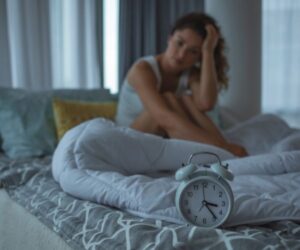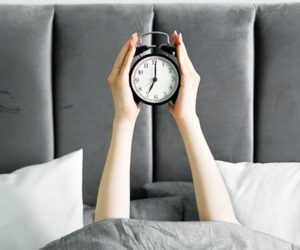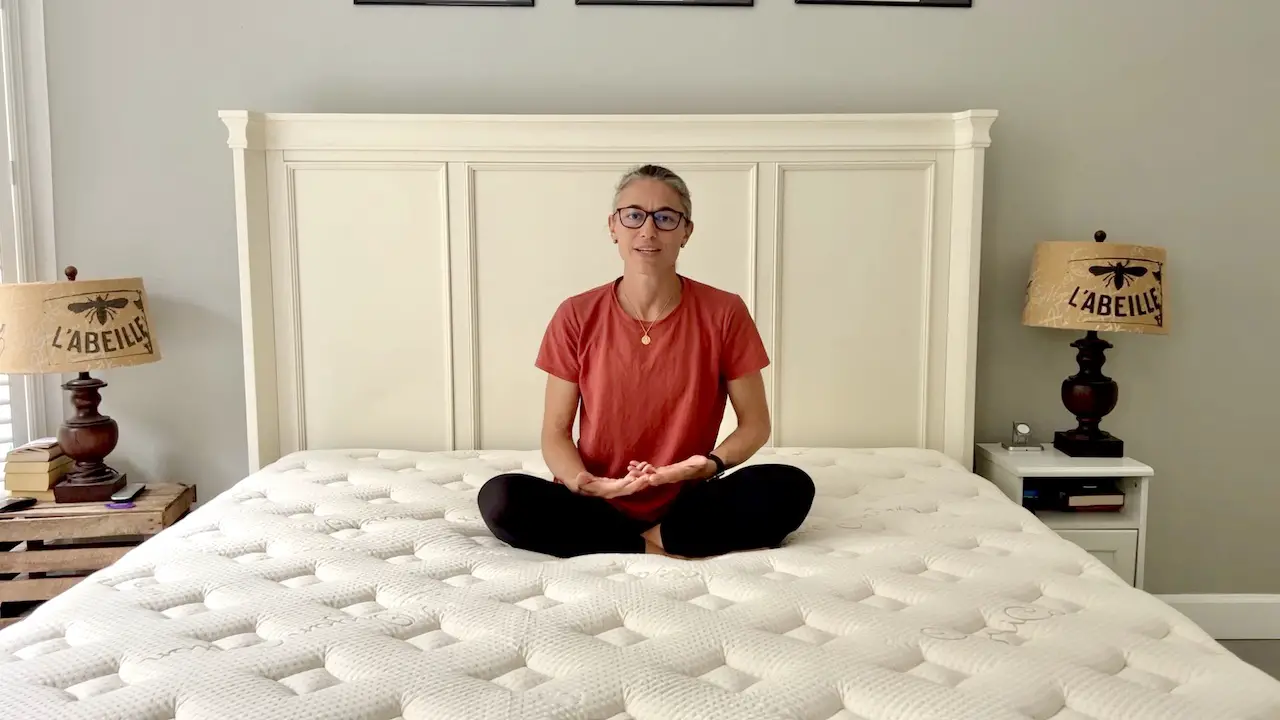HOW TO STOP BED SHEETS FROM PILLING
And How To Get Rid Of It!
Pilling on bed sheets can be frustrating, affecting not only the appearance of your bedding but also your comfort while sleeping. Understanding what causes pilling, how to remove it, and how to prevent it in the future will help keep your sheets in pristine condition for longer.
Let’s explore the causes of pilling and offer practical solutions to prevent it, ensuring your bed remains soft, smooth, and comfortable.
Table of Contents
What is Pilling?
Pilling is the formation of small, fuzzy balls of fiber on the surface of fabrics, including bed sheets. These small balls, known as “pills,” occur when loose fibers on the fabric’s surface tangle together and form tiny clumps. Pilling commonly appears in areas that experience frequent friction, such as where you sleep or move the most on your sheets. While it doesn’t necessarily mean your sheets are poor quality, pilling can significantly reduce their comfort and lifespan.
Why Does Pilling Happen?
The main cause of pilling is the rubbing or abrasion of the fabric surface, which dislodges fibers and tangles them into pills. This can happen for various reasons, including:
- Fabric type: Some materials are more prone to pilling than others. For instance, cotton-polyester blends are more likely to pill compared to pure cotton sheets.
- Washing and drying: Improper washing and drying methods can exacerbate pilling. Overloading the washing machine or using high-heat drying cycles can increase friction, encouraging pills to form.
- Quality of fabric: Lower-quality sheets tend to pill more quickly because they use shorter fibers, which break easily. Higher-quality fabrics made from long fibers are more resistant to pilling. Higher purchase price can mean that you pay less in the long run, as higher-quality more-expensive sheets should last you years, with no need to purchase a new set!
Why Do Some Bed Sheets Pill?
Fabric Composition
As mentioned, the type of material used to make bed sheets plays a significant role in pilling. Fabrics made from short fibers (such as some cotton-polyester blends) tend to pill more because the short fibers are less stable and are more likely to break free during friction. Natural fibers like cotton, linen, bamboo, or eucalyptus, when made from long-staple fibers, are more resistant to pilling.
Wear and Tear
Sheets that experience a lot of movement or friction are more likely to pill. For example, if you frequently toss and turn at night, or if your bed sheets are constantly rubbing against rough clothing (like certain types of pajamas), this can lead to more frequent pilling.
Improper Washing
Washing bed sheets too frequently or using the wrong washing techniques can accelerate pilling. Harsh detergents, using too much detergent, high temperatures, and overcrowded washing machines can all increase the likelihood of pills forming on the fabric.
Can I Remove Pilling From Bed Sheets?
Yes, you can remove pilling from bed sheets using a few simple methods:
1. Fabric Shavers
One of the easiest ways to remove pilling is by using a fabric or lint shaver. These devices safely remove pills by gently cutting them away from the fabric without damaging the sheets. Just run the shaver over the surface of the fabric, and it will lift the pills off.
2. Lint Rollers or Tape
For smaller pills, a sticky lint roller or even adhesive tape can help. Roll the lint roller over the sheet’s surface, and the pills will stick to it. This method works best on light pilling and may need to be repeated for more significant areas.
3. Sweater Stone or Razor
Another option is to use a sweater stone or a safety razor. Gently scrape the surface of the sheets where pilling has occurred, removing the pills without damaging the fabric underneath. Be ultra cautious when using this method to avoid tearing the sheets.
What is the Best Bed Sheet Type to Avoid Pilling?
Choosing the right bed sheet material is key to avoiding pilling in the first place. Here’s a breakdown of some of the best materials that resist pilling:
1. Long-Staple Cotton (Egyptian, Pima, or Supima Cotton)
Long-staple cotton fibers are more resistant to pilling because they have fewer loose fibers that can break free, thanks to their length. Egyptian cotton, Pima cotton, Supima cotton, and organic cotton in general, are excellent choices for sheets that are less likely to pill. These cottons are soft, durable, and known for their luxurious feel.
Discover one of our favorite organic cotton sheets here.
2. Linen
Linen sheets are naturally resistant to pilling because they are made from long, durable fibers. Linen is also highly breathable, making it a great choice for those who tend to overheat at night. Although linen has a rougher texture initially, it softens over time (with every wash) without losing its resistance to pilling.
Discover our favorite linen sheets here.
3. Percale Weave Cotton
Percale sheets are known for their tight weave, which makes them less likely to pill. The crisp, cool texture of percale sheets can also add to the overall comfort of your bedding while helping prevent pilling over time.
Discover our favorite percale sheets here.
4. Bamboo and Silk Sheets
Bamboo sheets and silk sheets are both naturally smooth and less likely to pill. Bamboo sheets, in particular, have become a popular choice for those looking for a soft, eco-friendly option that resists pilling and stays comfortable through many washes.
Discover our favorite bamboo sheets.
5. Eucalyptus Lyocell and Tencel
Eucalyptus lyocell and Tencel sheets are made from sustainably sourced wood fibers, making them both eco-friendly and highly resistant to pilling. The smooth texture of these fabrics reduces friction, preventing loose fibers from forming pills. Additionally, these materials are breathable, moisture-wicking, and incredibly soft, making them a great choice for those seeking durability and comfort without the risk of pilling.
How To Prevent Pilling in Bed Sheets
Preventing pilling is often easier than dealing with it after it has formed. Follow these tips to keep your bed sheets smooth and pill-free for longer:
1. Proper Washing Techniques
The way you wash your sheets can greatly impact their likelihood of pilling.
Wash in Cold Water
Always wash bed sheets in cold water to minimize the friction that can cause fibers to break free and form pills. Hot water can weaken the fibers and exacerbate the pilling process.
Use a Gentle Cycle
Select a gentle or delicate cycle on your washing machine to reduce the mechanical agitation that can cause pills to form. The less friction your sheets experience, the less likely they are to pill.
Wash Sheets Separately
Avoid washing your sheets with items that have zippers, buttons, or rough textures. These items can cause friction and damage the fabric. Ideally, wash sheets separately or with other soft fabrics.
Use Mild Detergents and Less of It
Harsh detergents can weaken the fibers in your sheets, increasing the chance of pilling. Opt for a mild, liquid detergent and avoid using too much, as excessive detergent can leave residue that contributes to pilling.
2. Drying Methods
Drying bed sheets properly is just as important as washing them carefully.
Air-Dry or Low Heat
Whenever possible, air-dry your sheets. If you prefer using a dryer, set it to low heat or the air-dry setting to reduce the risk of fabric damage. High heat can weaken fibers, leading to more pilling over time.
Don’t Overdry
Remove your sheets from the dryer when they are still slightly damp. Overdrying your sheets can damage the fibers and make pilling worse. Finish drying them by laying them flat or hanging them to air-dry.
3. Storing Bed Sheets Properly
The way you store your bed sheets can also help prevent pilling.
Avoid Overstuffing Closets
Store your sheets in a clean, dry area where they won’t be crammed together. Overstuffing your linen closet can cause unnecessary friction between your sheets, increasing the likelihood of pilling.
Use Fabric-Safe Storage Solutions
Store your sheets in fabric-friendly containers like cotton bags, which will allow the sheets to breathe while preventing friction. Avoid storing sheets in plastic bags or containers, as this can trap moisture and encourage fabric breakdown.
4. Rotating Bed Sheets
Rotating between multiple sets of bed sheets can help reduce wear and tear on any one set. This simple practice can prolong the life of your sheets and minimize pilling, as they won’t experience the same amount of friction night after night.
We recommend owning 2 or 3 high-quality sheet sets to rotate as you wash each.
How To Stop Bed Sheets From Pilling
Pilling on bed sheets can be annoying, but it is not inevitable. By understanding what causes pilling and taking steps to prevent it, you can enjoy smooth, comfortable sheets for longer.
Choosing the right materials, washing your sheets properly, and using gentle care methods are key to avoiding those unsightly little pills. Follow the tips above, and you’ll be able to keep your bed looking and feeling luxurious night after night.
And remember: quality and price usually go hand-in-hand. While the initial investment is higher for high-quality fibers, you will find that they will last you several years, easily saving you money in the long run.
References
- News Medical. (2022). A Guide To Healthy Sleep Positions. Retrieved from https://www.news-medical.net/health/A-Guide-to-Healthy-Sleep-Positions.aspx
- HealthLine. (2018). Is It Bad To Sleep On Your Stomach. Retrieved from https://www.healthline.com/health/is-it-bad-to-sleep-on-your-stomach
FAQ
Most frequent questions and answers
Pilling is caused by friction, which breaks loose fibers on the surface of your sheets, causing them to tangle and form small balls of fabric.
Yes, you can remove pilling by using fabric shavers, lint rollers, or even a sweater stone to gently lift the pills without damaging the sheets.
Sheets made from short-staple fibers, such as certain cotton-polyester blends, are more prone to pilling compared to long-staple cotton, linen, or bamboo fabrics.
Wash sheets in cold water on a gentle cycle, avoid high-heat drying, and store them carefully to reduce friction. Opt for mild detergents and avoid overstuffing your washing machine.
Sheets made from long-staple cotton, such as Egyptian or Pima cotton, as well as linen, bamboo, and silk sheets, are excellent choices for preventing pilling.
What causes bed sheets to pill?
Pilling is caused by friction, which breaks loose fibers on the surface of your sheets, causing them to tangle and form small balls of fabric.
Can you fix pilling on sheets?
Yes, you can remove pilling by using fabric shavers, lint rollers, or even a sweater stone to gently lift the pills without damaging the sheets.
Which fabrics are most prone to pilling?
Sheets made from short-staple fibers, such as certain cotton-polyester blends, are more prone to pilling compared to long-staple cotton, linen, or bamboo fabrics.
How can I prevent bed sheets from pilling?
Wash sheets in cold water on a gentle cycle, avoid high-heat drying, and store them carefully to reduce friction. Opt for mild detergents and avoid overstuffing your washing machine.
What are the best bed sheets for avoiding pilling?
Sheets made from long-staple cotton, such as Egyptian or Pima cotton, as well as linen, bamboo, and silk sheets, are excellent choices for preventing pilling.
Share this deal with a friend!

Laura Georgieff
Laura is a mother of three who did not sleep through the night for the first 5.5 years of her kids' lives. She is passionate about sleep quality and loves sharing her experience and knowledge of all thing bedding! It is her mission to help you make the best decisions when it comes to sleep and help you get the best deal on the market!






